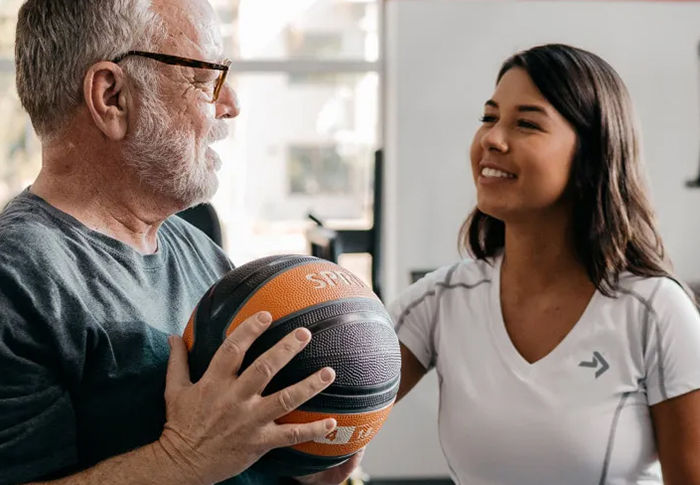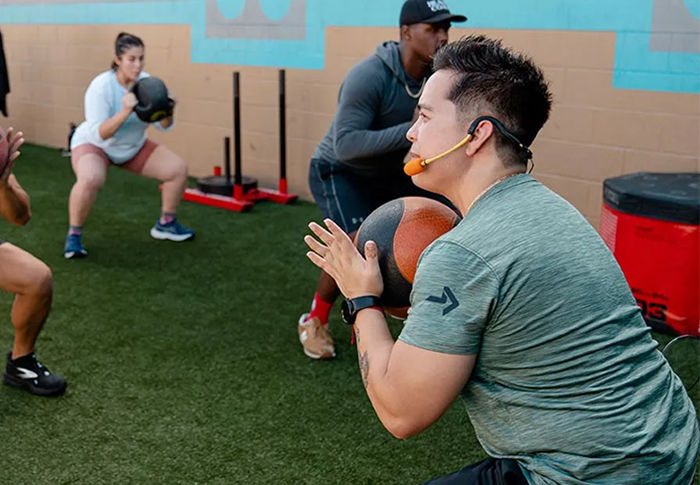
Taking the time to conduct an annual review of the legal considerations associated with being a health coach or exercise professional is essential, whether you’re an entrepreneur, work as an employee in a large gym or hold any of the countless other positions available in the fitness industry. Because the industry is always changing, it’s best to check in on occasion to not only make sure you’re in compliance with the law, but also that you’re protected via the appropriate types and amounts of insurance, are using the appropriate documentation with clients and class participants, are operating within your scope of practice, and so on.
This is especially important if your role has changed over the past year—or since you last did this type of review—as it’s possible that your legal responsibilities have shifted as well. For example, have you moved some of your small-group training sessions from the gym to the local park? Have you started teaching group fitness classes online or allowing some participants to join the class remotely while you teach at the facility? Have you changed from an employee to an independent contractor or earned a new certification that altered your scope of practice?
Use the following checklist to make sure you have your legal house in order and be sure to return to this list every 12 months or so—or whenever you experience a change in your career or work responsibilities. Conducting this type of review is the best way to ensure that you and your clients and participants are legally protected and positioned for success.
If you're an ACE Certified Professional, you can download a streamlined version of this checklist by clicking the bar at the top of this page. Just be sure you're logged in to your MyACE Account in order to view and print this helpful checklist.

The place to begin your review is by knowing the type of business entity under which you will operate, says Mark Nagel, EdD, professor in the Sport and Entertainment Management Department at the University of South Carolina and the author of the “Legal Guidelines” chapters in ACE’s The Exercise Professional’s Guide to Personal Training and The Exercise Professional’s Guide to Group Fitness Instruction.
Begin by asking yourself, “Am I working as an independent contractor or an employee?” This may seem pretty clear, but some facility owners may try to blur that line, as it’s often beneficial to them to hire independent contractors because they do not have to provide training, medical or other benefits, arrange for social security withholding, or pay into worker’s compensation or unemployment funds for independent contractors—all of which they have to do for employees. So, step 1 is to ensure that you’re not being taken advantage of by operating as an employee but being treated as an independent contractor.
If you are an independent contractor, the next step is to determine which structure works best for you. That might be a sole proprietorship, partnership or corporation (or any of the sub-entities that exist within each of those categories). Do your homework and be sure you’ve chosen the structure that aligns with your career values and goals. Unfortunately, many professionals find out “too late” that operating as “an individual” rather than under another business structure can have significant legal and financial ramifications.
If you’re an employee, your work here is done! Time to move on to the next item on the checklist.

When it comes to professional liability insurance, Nagel says, “your employer is going to have insurance and legal components in place to protect them, but they’re not necessarily always worried about protecting you.” Hopefully, if you’re an employee, you’re fully covered. Still, it’s important to understand that, depending on the scenario, you not only might be sued as an individual in addition to your employer being sued as a business, but you also might be responsible for your own defense in that litigation.
You want to be protected personally, Nagel explains, as legal issues can become complex very quickly, especially in a field where you’re dealing with injury risk and physical exertion as part of your daily work. It’s absolutely essential that all professionals working in the health and fitness industry carry adequate professional liability insurance.
ACE offers discounted rates for its certified health coaches and exercise professionals on liability insurance that can help you in the event you are ever sued for injury or damages. This coverage offers broad protection at low annual premiums.
Nagel also recommends that pros get an umbrella policy on top of their personal liability policy. “Umbrella policies offer a lot of protection for a relatively limited investment,” he explains.
In addition to discounted rates on
liability insurance, ACE also offers health and wellness benefits to all ACE Certified Professionals. These benefits include everything from medical, dental and vision insurance to disability and even a 401K option. Check out your
available benefits and shop for the plans that meet the needs of you and your family.

There are a number of contracts and other legal documents that health coaches and exercise professionals may utilize in their day-to-day operations, including agreements to participate, waivers and informed consent forms. These documents vary depending on whether you offer one-on-one coaching/training or group fitness instruction, as your legal responsibilities vary according to each scenario.
While ACE textbooks may offer sample forms for reference and understanding, it’s critical that you consult regularly with legal counsel specializing in health and exercise in the state in which you operate before using these documents with clients or participants.

Prior to offering outdoor classes or training clients outdoors, there are several legal and risk-management issues you should consider, such as the following:
- Be sure to use waivers specifically for outdoor sessions or classes. Do not assume a “standard waiver” covers outdoor activities. You may need to have a specific policy not only for a remote location, but also one for specific types of environments (e.g., beach or forest).
- Have an emergency response plan. What will you do if a situation arises that mandates the session or class be stopped, moved or significantly altered? Clients or participants should be aware of important elements of the plan before the class begins. A critical element of any response time is ensuring cell phones are usable at the class location.
- Review professional liability insurance. In many cases, specific language covering off-site, outdoor activities needs to be included in the insurance plan.
- Be mindful of local laws regarding the use of public, outdoor spaces, and never assume that a space can be utilized without first verifying (in writing) that the space is usable for an exercise session or group fitness class.
- Be sure that all parties have agreed to the use of space through a shared-use agreement. Do not deviate from the agreed-upon location (such as by moving “up the beach” past the identified and agreed-upon location).
- Consider the legal use of music. Outdoor locations do not lessen the need for securing proper rights to utilize copyrighted music (more on this below). In some cases, locations may require you to produce verification of appropriate music performance licenses before each class or session.
“I always remind people when discussing training or teaching in outdoor spaces,” Nagel says, “to think about how your clients or participants are going to get there. Obviously, you're not responsible for someone coming from their home to this outdoor location, but is there sufficient parking in a safe environment? What happens after dark? Is there adequate lighting? Is the path to and from where they’ll be exercising clean and free of hazards? You want to have a good standard of practice regarding whether the environment is safe for all participants or clients.”

Though the teaching of online fitness classes or leading online exercise sessions is largely an emerging and unsettled area of law, professionals who choose to instruct online fitness sessions or classes should take into account additional risk-management considerations, such as the following:
- Be sure to use client/participant waivers or other appropriate pre-exercise documentation that specifically mentions online instruction and is appropriately worded for each individual’s home state (and potentially city or county).
- Have an emergency response plan for how to prepare for (through pre-exercise reminders), and react to, potential emergencies experienced by clients or participants. Though the legal requirements in this area are evolving, suggestions for clients or participants to stop exercising and seek help if experiencing any unusual physical outcomes are advised.
- Secure professional liability insurance that specifically mentions online instruction.
- Utilize only legally permitted music.
- Attain acknowledgment and agreement from each client or participant via a digital informed consent and waiver of liability.
This is a complex topic, explains Nagel. “There is a lot that remains unsettled about online training and instruction because now we’re not dealing only with different cities and states, but you might even be dealing with different countries.” The issue is that waivers and other paperwork is not universally accepted and interpreted by the courts.
It’s difficult, if not impossible, to craft a document that's going to fit the needs of all clients or participants and the jurisdictions in which they’re exercising. To address this concern, Nagel suggests taking advantage of one of the features of online classes and sessions: the ability to record and save.
During sessions, he explains, you should be overt and clear in your instructions and cueing and be consistently checking in with clients and participants—and getting verbal affirmations that they heard and understand what you are saying. That way, even if a waiver doesn’t align with the needs of a particular jurisdiction, you have a record of exactly what was said and done in each session. In the event of an injury or other incident, you can illustrate how you were actively engaged in proper training or instruction, as well as proper supervision.

Take out your ACE textbook and review your scope of practice, which is defined as the legal range of services that professionals in a given field can provide, the settings in which those services can be provided and the guidelines or parameters that must be followed.
Think about your communication with participants and clients, your marketing pieces and online presence, and the services you offer through the lens of your scope of practice. Are you using language that is outside your scope, such as “prescribe,” “rehabilitation” or “treatment”? Are you offering nutrition-related services that are beyond your expertise?
It can be easy to stray into roles for which you are not qualified, such as that of a registered dietitian nutritionist or even a therapist, so take a few minutes to think critically about your language and services. Be very mindful of your scope of practice and ensure that your work with clients always falls within the limits of that scope.

If you use music as part of your training or instruction, even if it’s only in the background of an online training session, for example, take a few minutes to ensure you are in compliance with music and copyright law. The owners of copyrights will often investigate gym, educational settings and even online class activities to determine whether copyrighted music is being utilized in an exercise setting without a license.
To be able to use copyrighted music in an exercise class or session, you must obtain a performance license from one of the major performing rights societies—the American Society of Composers, Authors and Publishers (ASCAP), Broadcast Music, Inc. (BMI), or the Society of European Stage Authors and Composers (SESAC). Most clubs and studios obtain a blanket license for their instructors.
If you work as an independent contractor at several locations and/or use your own music, you may have to obtain your own licenses. Check with the facilities where you teach to see if each club’s blanket license covers your classes. One viable option is to buy licensed music made specifically for fitness classes, where the copyright holder expressly permits the original music to be used for that purpose. (Note: ACE Certified Professionals can receive a 20% discount on a VIBES music membership through Muscle Mix. You can find more information in the ACE Pro Discount section of your MyACE Account.) Another option common for pre-choreographed classes is for clubs to buy “packaged” group fitness programs where all the advertising, music and instructor training are provided, and the fitness center is allowed to use the name brand of the program in its advertising.
The proliferation of online fitness classes has resulted in the need to update music licenses to adhere to the new environment, so you’ll need to ensure that you are licensed to utilize music not only for in-person classes/sessions, but also in the virtual environment. Importantly, even if you have secured a license to use protected music in an online class/session, the delivery mechanism can impact the ability to utilize the license. Many social media sites have mechanisms to detect and potentially mute copyrighted music. It is not advisable to deliver an online fitness class or session through a platform that may automatically silence music without warning.

Health coaches and exercise professionals are often exposed to sensitive personal information. Material provided on health screening forms and during conversations with participants may reveal personal information that should always remain confidential. It’s a good idea to periodically review how you’re securing that information away from public access. This may entail storing forms and waivers in a locked file cabinet or as password-protected computer files. Also, think about whether you may inadvertently be sharing client information with other clients or colleagues, whether that’s by telling success stories or displaying before and after photos without permission. Nagel notes, “Unfortunately, it is easy to take a client’s paperwork and plan to file it ‘later’ after an exercise session. Leaving important documents in public view at the gym or even on a desk is a significant potential problem.”
Remember, sharing personal information can potentially be against the law, so it’s vital you acquire express written consent from the client or participant before divulging any information or photos.

Never lose sight of the fact that safety is a basic issue for a fitness facility. If you are using exercise equipment as part of your daily work, whether that’s resistance machines in the gym, balance-training devices in a client’s home or a suspension trainer in a local park, be sure to adhere to the maintenance schedule provided by the manufacturer and repair or remove any damaged or broken equipment immediately.
In addition, it’s a good idea to continually inspect the environment and ensure that it is free from unreasonable hazards and that all areas of the facility are appropriate for the specific type of activity to be conducted in that area. For example, dance-based fitness and martial arts classes require a floor surface that will cushion the feet, knees and legs from inordinate amounts of stress, while the free-weight area of a fitness facility should be free from any tripping hazards.
Nagel notes, “An important consideration is movement of activities to new locations. If an area is unusable due to a small roof leak, a power outlet not working, etc., be careful before moving that activity to a new location and ensure that it has been inspected not only for overall safety but also safety regarding the specific type of activity that will be conducted.”
Final Thoughts
Far too often, filed lawsuits are the first indication that a health coach or exercise professional has not adhered to established legal guidelines. In most of these cases, a simple understanding of the law and the professional’s responsibilities could have prevented the lawsuit or mitigated the potential damages.
Using this annual checklist will help you stay on top of your legal responsibilities. In addition, it’s a good idea to regularly consult with an attorney who specializes in the fitness industry and is aware of the unique laws governing your location and services, whether you offer them in your hometown or to a global audience online.





 by
by 











